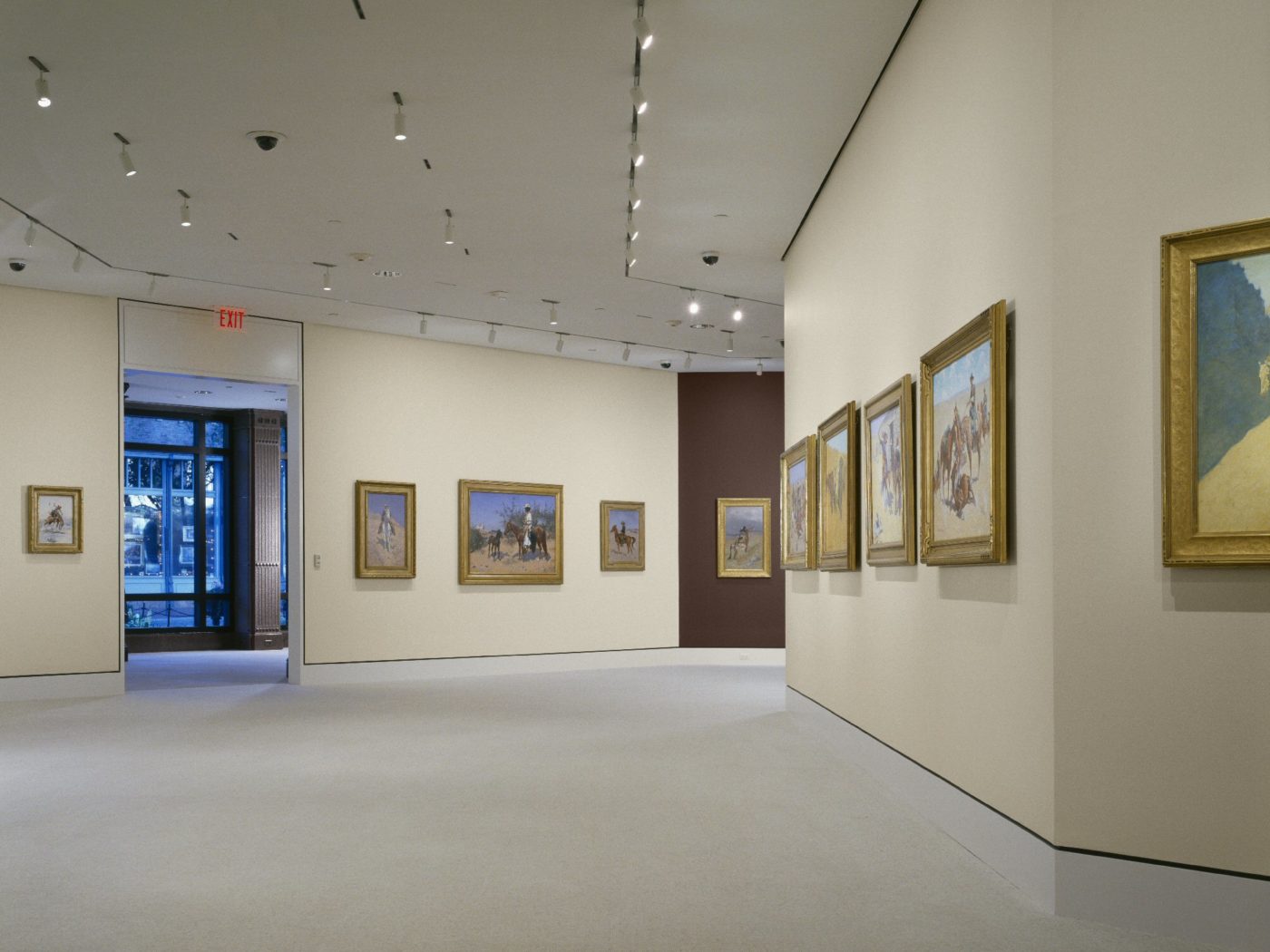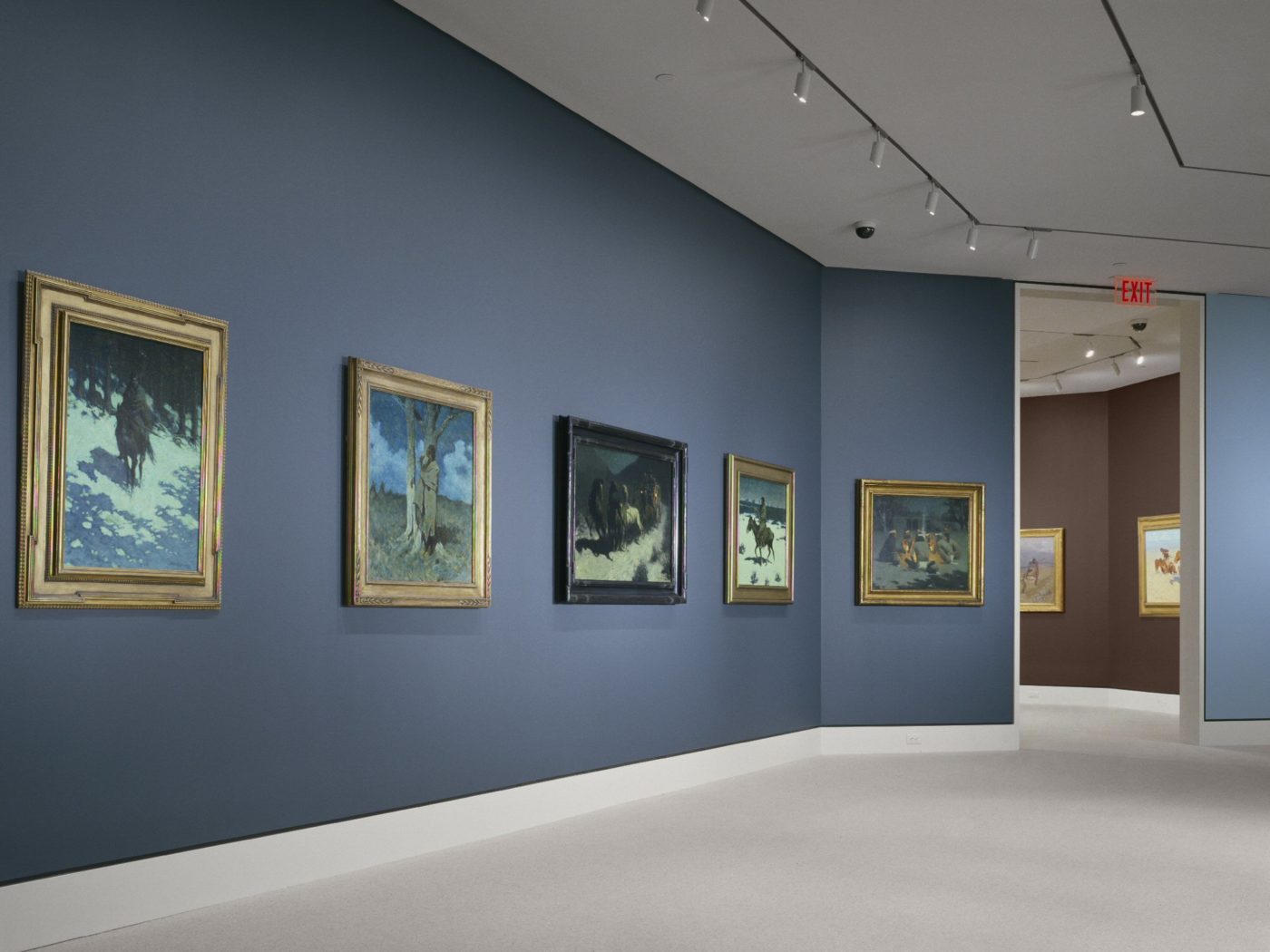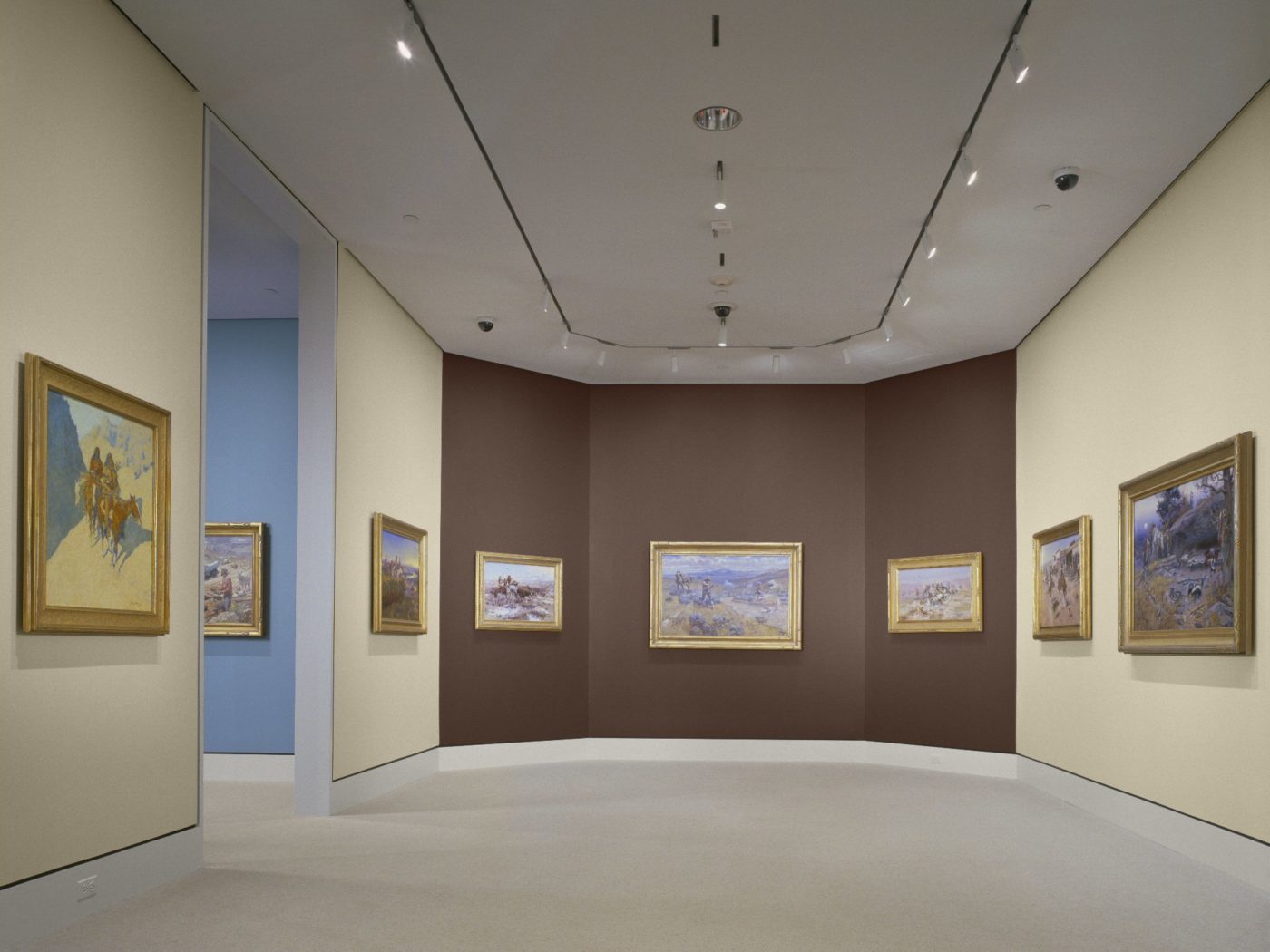The Sid Richardson Museum in the Sundance Square neighborhood of Fort Worth houses over 60 paintings by renowned artists Frederic Remington and Charles M. Russell. We were retained to design a renovation and expansion of the gallery space along with a renovation of over 4,000 SF of museum office space on the second floor of the building.
Prior to the renovation, the Sid Richardson Museum had a solid brick facade with a tinted-glass door, set back from the plane of neighboring storefronts. The quickly dated design did not contribute to the streetscape and lacked identity. Our design for the renovation includes the creation of the large storefront windows and a clear glass pair of doors. This new transparency, providing views into the Museum’s Main Lobby and Gift Shop, is a lively addition to Main Street. The Museum now fits much more comfortably with the other storefronts on the block, while its granite pilasters convey the importance of the Museum, and the bronze buffalo details hint at what’s inside.
Creating a Dynamic Gallery
Inside, the gallery space has been radically reworked to allow for a much greater level of flexibility. Previously, the Gallery was essentially one large room divided by a wall. This limited the arrangement of the paintings, and as a consequence the exhibit remained static for many years. Now, the space has been split into a larger Front Gallery and a smaller Back Gallery. Remarkably, the new Galleries together occupy the same square footage as the old space, but the two Galleries, with their different shapes and sizes, provide more options. This new approach to Gallery design means the Museum can easily mount rotating exhibits in a variety of configurations in order to showcase specific aspects of the collection.
Consultants from the National Gallery of Art in Washington, DC, supported this design process by providing expert advice, particularly in regards to proper lighting. As a result, the new Galleries feature museum-quality light fixtures that both wash the Galleries in appropriate light and also highlight individual paintings.
The paintings have all been reframed in the way the artists themselves would have framed them. The combined effect of the reframing, the proper lighting, and the reconfigured Galleries creates what is essentially a new Museum. Visitors who have been to the Museum in the past can now see the paintings again for the first time in a new light, both literally and figuratively.



